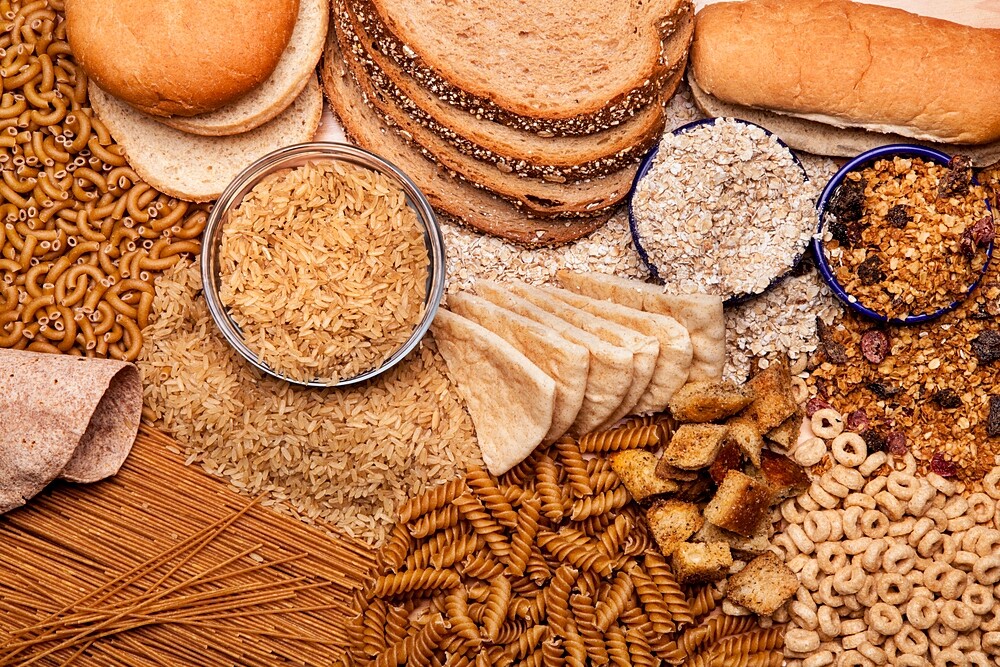Whole grain products are absolutely trendy at the moment and are part of a conscious diet for many people. You can find out what is behind it here.
Definition of whole grain
Each grain consists of grains that can be divided into three categories:
- Bran: Defines itself as the outer husk of the cereal grain and contains a great deal of fibre. Foods like wheat bran are therefore difficult to digest and at the same time fill the stomach very well.
- Germ: The germ is located inside and contains many minerals and vitamins.
- Endosperm: The endosperm is also located inside and has important properties for baking. Flour with a low type number (405, 550) consists mainly of this component of the grain, while wholemeal flour comes from the whole grain.
We always speak of whole grain, as the name suggests, when the whole grain with all its components is used. This can have already been processed in the form of flour or flakes or can be available as a complete grain.
How healthy is whole grain really?
- White flour products such as toast or noodles already have the disadvantage that they are not particularly satiating. Since wholemeal products contain a lot of fibre, this is better for the feeling of satiety.
- In addition, white flour products consist of very few nutrients due to their processing; the husk and germ are already removed. This includes dietary fibres, but also minerals and trace elements, for example zinc and iron.
- Studies have shown that whole grain products, for example whole grain pasta, can reduce cardiovascular diseases, diabetes and obesity. It has also been shown that 90 grams of whole grain products per day can mean a longer life and also reduce the risk of cancer, strokes and other strokes of fate.
From second choice to trend product
- One can almost speak of a whole grain comeback, because for a long time whole grain products were only considered an emergency solution, as no machines were available to process grain. But with the technical possibilities that arose, the grain was crushed in such a way that white flour was offered from the crushed grain.
- White flour makes the products last longer, which is also an advantage for the suppliers. But in recent years this trend has reversed again. More and more people are giving priority to a valuable, balanced diet, in which whole grain products play an important role.
How do I recognize them?
- Not everything that looks like whole grain is actually whole grain. If you want to be on the safe side and really want to buy whole grain products, there are a few things you should consider. Many foods are darkened with colour, also to make a healthier impression. These products often contain beet or barley syrup for colouring.
- The term whole grain is protected by law. So you can be sure to get whole grain with a product called whole grain. Many products, such as crunchy or granola mueslis, have little to do with a healthy diet, as they contain a lot of sugar.
- If you buy pre-packaged bread, you can also see in the list of ingredients whether it is wholemeal bread, because it has to consist of at least 90 percent whole grain. If you are in doubt about fresh bread, just ask the seller.
Switch to whole grain
- Mixing: You don’t have to switch to whole grain overnight. When baking, for example, you can combine wholemeal flour with normal flour. You can also combine pasta or rice with wholemeal pasta or natural rice (wholemeal rice). Spelt is a delicious grain, which is often used for noodles. Spelt is also a great alternative for bread.
- Baking: Wheat is great for cakes or sweet pastries. Rye is great for bread.
- Gluten-free: If you don’t tolerate whole grain well, you can use pseudo grain like quinoa or amaranth. Or simply ask the baker for products with natural sourdough.

